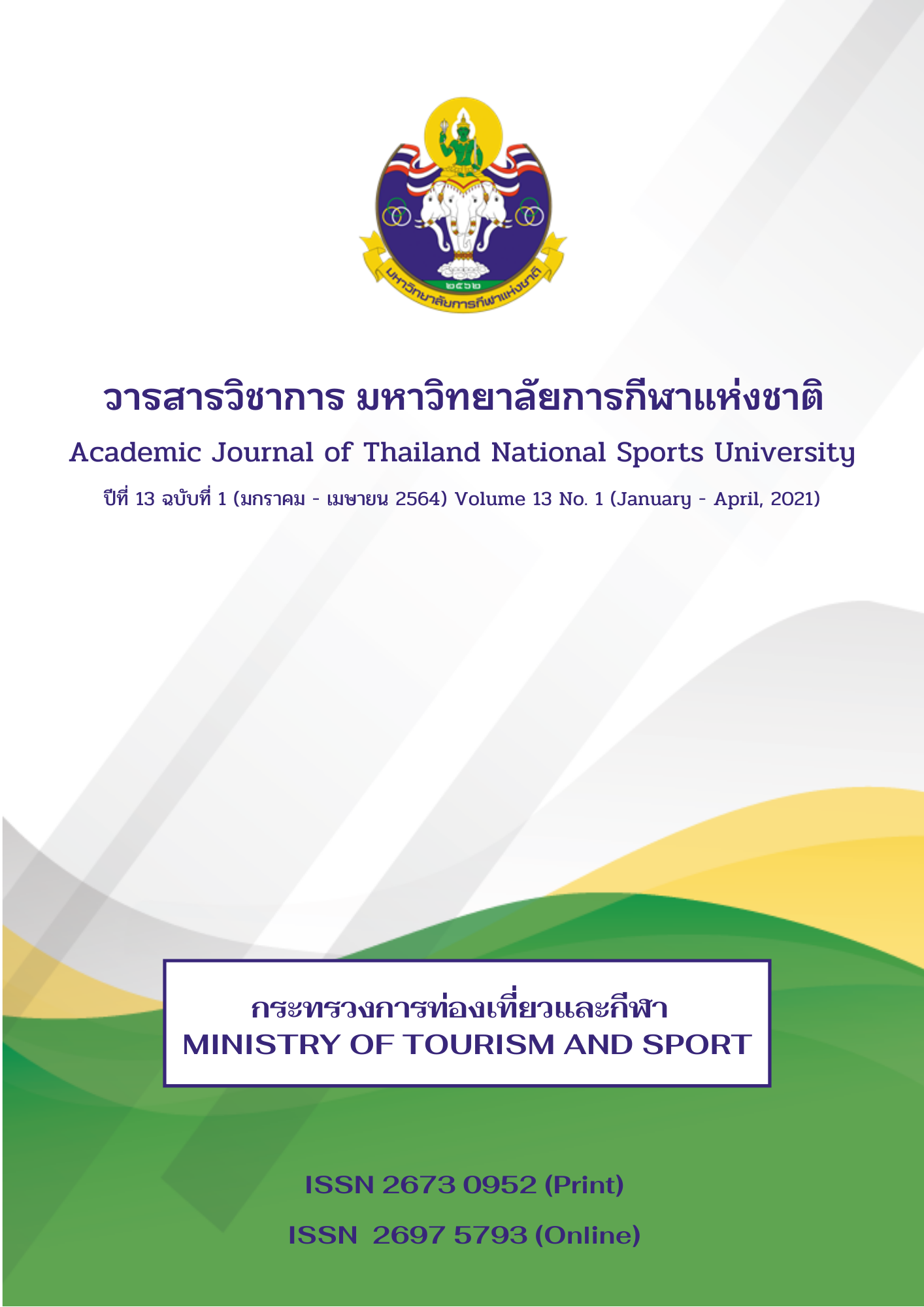DEVELOPMENT AND TESTING OF PHYSICAL ACTIVITY HEALTH LITERACY SCALE FOR ADOLESCENTS
Main Article Content
Abstract
This research developed scales to assess physical activity health literacy among adolescents. The scales were examined for content validity by experts, for reliability by 60 non-actual participants, and for their congruence by empirical evidence. The study was conducted in 822 undergraduate students in Rajabaht universities in 4 regions throughout Thailand: Northern, Central, Northeastern, and Southern, who were randomly recruited through multi-stage sampling method. Cronbach’s Coefficient Alpha was employed to assess the reliability, whereas the construct validity was assessed through the confirmatory factor analysis. The results were as follows:
- The developed scales devised based on synthesized literature including research studies, dissertations and academic articles. The scales were comprised of 9 key dimensions with a total of 96 items. The key dimensions include access to data about physical activity, understanding of physical activity, perceived physical activity benefits, perceived barrier to physical activity, perceived physical activity competence, attitude toward physical activity, interpersonal influence on physical activity, environmental/situational influences on physical activity, and physical activity behavior. Based on the content validity, 89 items showed high validity with the value of 0.5 and above, whereas 79 items were found to be acceptable with the discrimination indexes ranging from .21-.80 and the overall reliability value of .91.
2. The construct validity showed that the devised scales were congruent with the empirical evidence (chi-square = 4.77; p = 0.688; df = 7; GFI = .992; RMR = 0.009; RMSEA = .000). The scales, thus, showed capacity to discriminate physical activity health literacy among adolescents and to be a guiding light in improving and developing adolescent physical activity programs.
Article Details
The published article is a copyright of the Academic Journal of Thailand National Sports University. The passage appeared in each article in this academic journal is a perspective of each author which is not related to the journal. Each author is required to be responsible for all components of his/her own article. If there are any mistakes, each author must be responsible for those mistakes on his/her own.
References
Angelo, H.D.; Stephanie, L. F.; Linda, C. N.; April, Y. O. (2017). Adolescent physical activity: Moderation of Individual factors by neighborhood environment. Am J Prev Med, 52(6), 888-894.
Aphicha Momsiri. (2015). Development of sexual health literacy indicators for early adolescents (Doctoral dissertation), Srinakharinwirot University.
Boonleang TumThong. (2016). Research methodology in curriculum and instruction. Bangkok: Triple Education.
Chalothorn Siangsai and Suchitra SuKonthasab. (2016). Factors related physical activities of higher education institutes students in Bangkok Metropolis. Journal of Sports Science and Health, 16(3).
Chulaporn Sota. (2011). Concepts, theories and applications for the development of health behavior. Khon Kaen: Department of Health Education, Khon Kaen University
Department of Health. (2017). Thailand recommendations on physical activity, non-sedentary lifestyles, and sleeping. Bangkok: Department of Health Ministry of Public Health.
Espanha, R.; Avila, P. (2016). Health literacy survey portugal: A contribution for the knowledge on health and communications. Procedia computer Science, 100, 1033-1041.
Institute for Population and Social Research. (2015). Thai Health Report 2015. Retrieved from http://www.ipsr.mahidol.ac.th/ipsrbeta/FileUpload/PDF/443-ThaiHealth2558-TH.pdf
Institute for Population and Social Research. (2016). Thai Health Report 2016. Retrieved from http://www.ipsr.mahidol.ac.th/ipsrbeta/FileUpload/PDF/454-ThaiHealth2016-TH.pdf
Kamolat Turner, Somporn Rakkwamsuk and Orawan Duangchai. (2018). Health literacy of nursing students at Boromarajonani College of Nursing, Chonburi. Journal of Health Science Research, 12(1), January-June.
Matsumoto, M.; Nakayama, K. (2017). Development of health literacy on social determinants of health questionnaire in Japanese adults. BMC Public Health, 17(30).
Montien Thongnopakul. (2016). Factors related to physical activity of working age people in maptaphut municipality in Rayong Province (Master’s thesis), Burapa University.
National Reform Steering Assembly. (2016). The National Reform Steering Assembly Report Entitled “Health Literacy and Health Communication”. Retrieved from http://library2.parliament.go.th/giventake/content_nrsa2558/d111459-03.pdf


